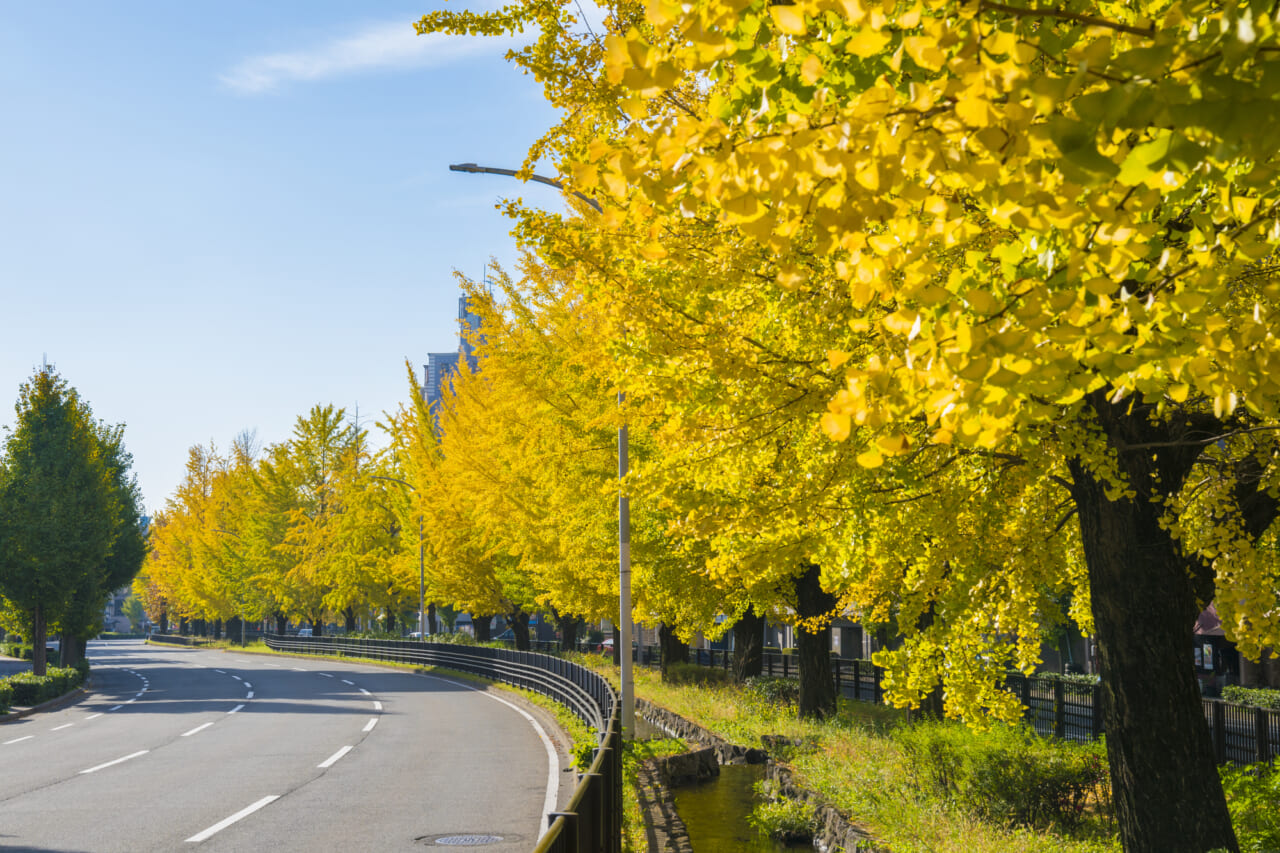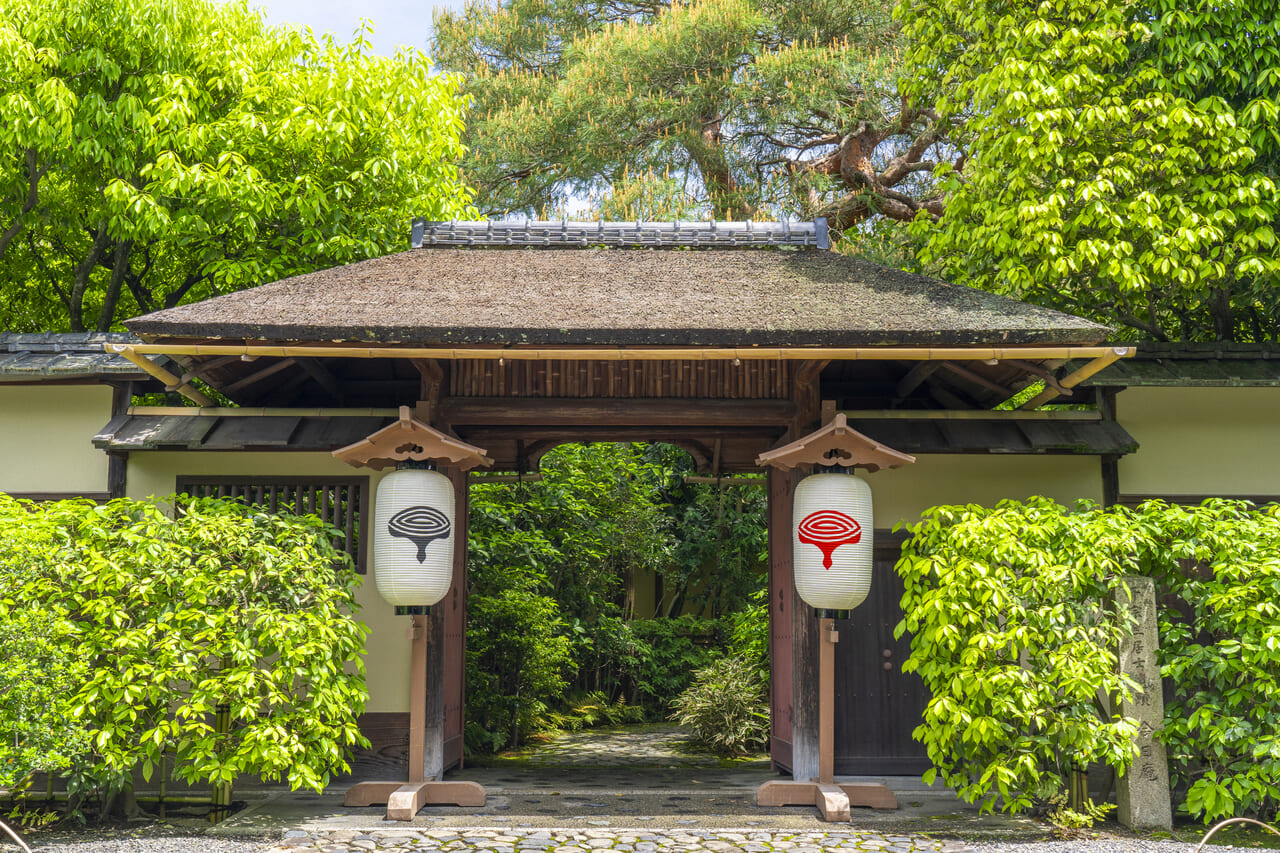At Kyoto Pleasant Hotel, guests can enjoy the autumn colors of the ginkgo trees along Horikawa Street from mid-November to early December each year. The trees line the street from the intersection of Horikawa Imadegawa, where Seimei Shrine is located, to the intersection of Horikawa Shimei, covering approximately 1 km.

Horikawa Street is a wide, three-lane road, and the central divider is landscaped as the “Horikawa Seseragi Park,” a great spot for photos. Yesterday, we saw tourists in traditional clothing and a group filming what might have been a music video.

Although there aren’t benches in the park to relax on, the hotel’s rooms provide a great place to stretch out and take a leisurely walk along the street.
Next to Seimei Shrine, the Nishijin Textile Center introduces Kyoto’s Nishijin weaving and displays historical materials. There are also live demonstrations by artisans and opportunities for hands-on experiences, making it a space that families can enjoy.
Here are a few easy walking routes along Horikawa Street.
Seimei Shrine, located at the Ijō Modoribashi Bridge, honors the astronomer Abe no Seimei from the mid-Heian period. The shrine became popular after being featured in the novel Onmyoji, which was also adapted into a manga and film, attracting visitors from all over Japan. Seimei Shrine is at the southern end of the ginkgo-lined street, and it’s just a 5-minute walk from Kyoto Pleasant Hotel.


Next to Seimei Shrine, the Nishijin Textile Center showcases Kyoto’s Nishijin weaving with exhibits and historical materials. It also offers hands-on demonstrations and crafting experiences by artisans, making it a great place for families to enjoy.

Head north from the hotel for about 5 minutes, then turn east at the Horikawa Teranouchi intersection to reach Ogawa Street, a historic area that still feels like a step back into the Edo period.

Along Ogawa Street, you’ll find the tea rooms of the headmasters of the Urasenke and Omotesenke schools of tea. The serene and dignified atmosphere may feel somewhat distant, as they are not tourist spots and general visitors cannot enter.
The upper photo shows Fushinan and the lower photo shows Kyoan. The stone marker at Fushinan reads “Sen no Rikyū’s Remains – Fushinan.”


A little further north from the Horikawa Teranouchi intersection is Kōsei-ji, a Zen temple of the Rinzai sect. While it’s normally closed to the public, the temple opens for a special autumn viewing of its garden during the fall season. It’s a hidden gem, so you can enjoy the peaceful and dignified atmosphere of the temple with fewer tourists. Kōsei-ji is just an 8-minute walk from the hotel.


At the northern end of the ginkgo tree-lined avenue, just before the intersection with Kita-Oji Street, you’ll find the quiet tomb of Murasaki Shikibu. The entrance and the stone monument mark the site.

During your walk, take a break at a café or sweet shop. Tsubara Cafe, run by the renowned wagashi maker Tsuruyayoshinobu, offers unique, innovative wagashi you can’t find anywhere else. Tsubara Cafe is just a 2-minute walk from the hotel, located at the intersection of Horikawa and Imadegawa Streets.

On Ogawa Street, you’ll find “Chalon Tawara-ya,” a tea shop run by the long-established wagashi maker Tawara-ya Yoshitomi. The area also features traditional tea utensil shops and elegant kimono stores, offering a unique window-shopping experience that captures the essence of Kyoto.

Of course, all rooms on the east side of Kyoto Pleasant Hotel also offer views of the ginkgo tree-lined avenue along Horikawa Street. Enjoy the golden hues of autumn leaves, a different beauty from the red maple foliage.

